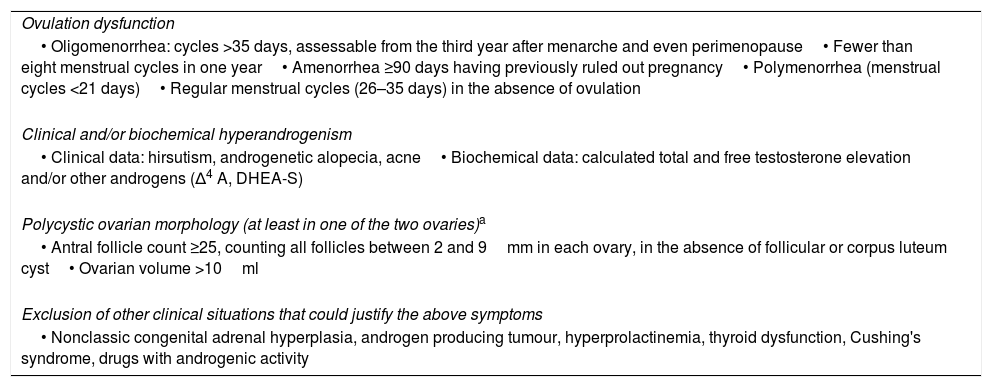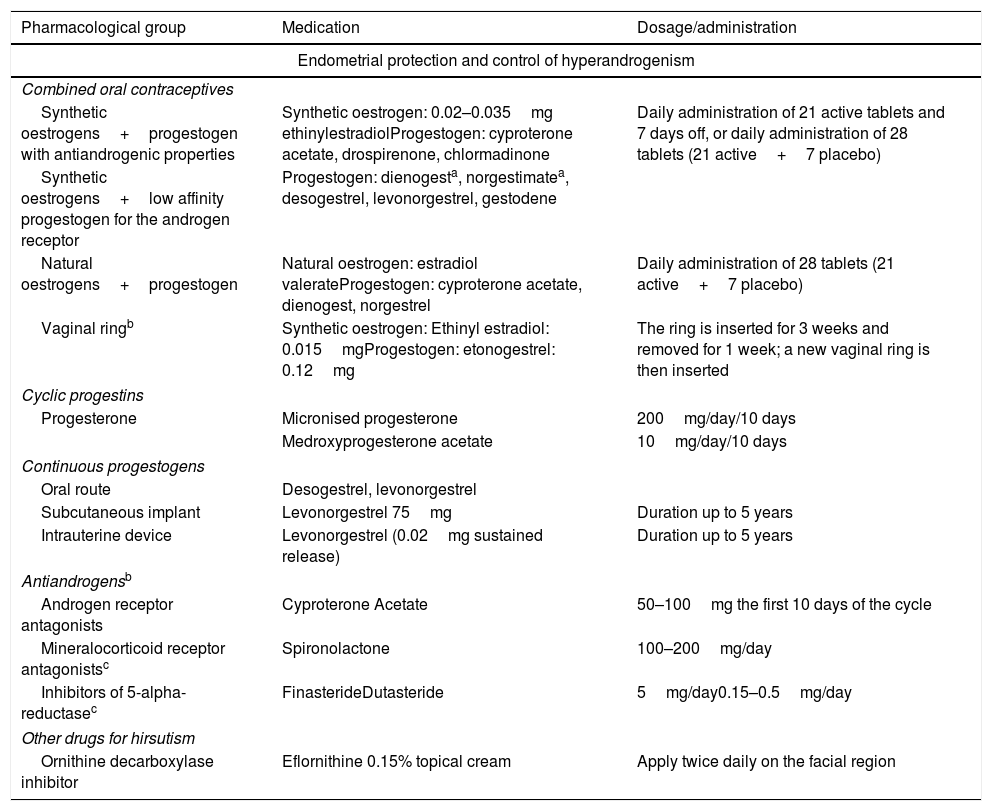Polycystic ovary syndrome is the most prevalent endocrine-metabolic pathology in pre-menopausal women. Its etiopathogenesis is complex, multifactorial and heterogeneous, including the interaction of genetic, epigenetic and environmental factors. Androgenic excess constitutes the disease's main physiopathological mechanism and results in reproductive, metabolic and cosmetic alterations which negatively impact these patients’ quality of life. The criteria established in the Rotterdam consensus and their correct application form the necessary basis for this syndrome's proper diagnosis. In the absence of an aetiological treatment, the aim is to improve the clinical signs and symptoms derived from hyperandrogenism, ovarian dysfunction and existing metabolic complications, and, therefore, they must be chronic and individualised.
El síndrome de ovario poliquístico es la enfermedad endocrinometabólica más prevalente en mujeres premenopáusicas. Su etiopatogenia es compleja, multifactorial y heterogénea, incluyendo la interacción de factores genéticos, epigenéticos y ambientales. El exceso androgénico constituye el principal mecanismo fisiopatológico de la enfermedad, resultando en alteraciones reproductivas, metabólicas y cosméticas que impactarán negativamente en la calidad de vida de estas pacientes. Los criterios establecidos en el consenso de Róterdam, y su correcta aplicación, constituyen la base necesaria para el correcto diagnóstico de este síndrome. Ante la inexistencia de un tratamiento etiológico este tiene como objetivo mejorar los síntomas y signos clínicos derivados del hiperandrogenismo, de la disfunción ovárica y de las complicaciones metabólicas existentes y, por lo tanto, debe ser crónico e individualizado.











